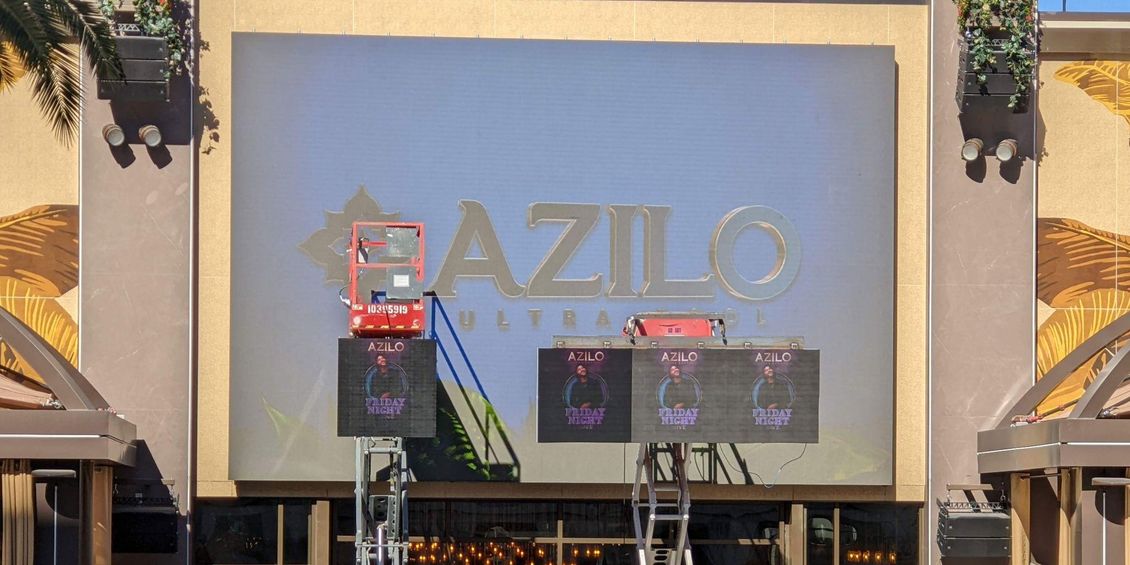
If your LED screen is located in the northern hemisphere and facing south, then you know just how devastating direct sunlight can be to your display. The sun seems to wash out the blacks in your image and give the perception that the LED is not bright enough.
This was a problem that the Sahara Resort in Las Vegas faced with their LED screen installed at the “Azilo Ultrabar” pool entrance. Their fairly new LED screen is facing due south, so it gets direct sunlight shining on it all day, all year. The header image above, taken in wintertime, when the sun is lowest in the horizon, reflects the worst case scenario. As is clearly seen in the image, the large LED screen in the background is washed out by the sun, appearing dull and faded.
Although increasing LED brightness is fairly straightforward, it involves significantly higher cost in raw materials and energy because the LEDs are more expensive and it takes more electricity to burn them brighter. However, there are strategies to increase contrast that are more cost effective:
To demonstrate to the customer how to solve the problem, Ad Art arranged to show a comparison of (3) options of their 6mm FS product that used different variations of the above techniques. A competitor also provided their proposed 6mm product to the far left. What was the result?

The “Ultra-black” LED option from Ad Art proved to perform best in direct sunlight, and it was the most cost effective of the three in terms of contrast performance. Interestingly, it was also the least bright of the options (only 5200 NITs). All (3) Ad Art options employed patented mask design. The 9000 Nit center cabinet employed high bright LEDs that cost 1.7 times more than our standard FS LEDs and required significantly more electricity. The left 5200 NIT cabinet employed ultra-black LEDs that cost 1.3 times more than our standard FS LEDs and required about the same amount of electricity.
So, which property is more important in direct sunlight? Clearly, contrast is more important. Ad Art will happily specify ultra-black SMD LEDs when the customer is willing to pay the extra cost. We believe it is certainly worth it, especially if the circumstances require it, and the customer can afford it.
We are committed to providing you with information that will help you make an informed decision. If you need further explanation or support, please feel free to contact us. We are available to assist with questions or issues not covered on our website.
© 2025 Ad Art Electronics Division - All Rights Reserved.